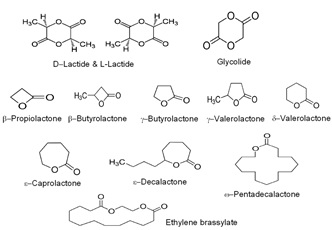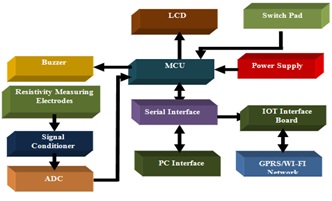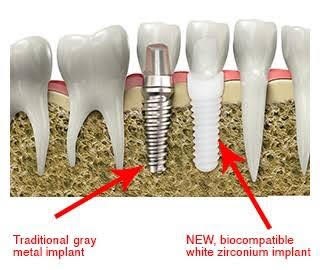Day 2 :
Keynote Forum
Raphael Gorodetsky
Hadassah Medical Center, Israel
Keynote: Fibrin interactions with matrix dependent cells: Applications and mechanism
Time : 10:00-10:35

Biography:
Abstract:

Recent Publications:
1. Raphael Gorodetsky, Shainer R, Gaberman E, Levdansky L and Gorodetsky R (2010) Efficient isolation and chondrogenic differentiation of adult mesenchymal stem cells with fibrin microbeads and micronized collagen sponges. Regen. Med. 5(2): 255-65.
2. Raphael Gorodetsky, Levy-Beladev L, Levdansky L, Gaberman E, Benyamini H and Friedler A (2010) A family of cell adhesion peptides homologous to fibrinogen C-terminals. Biochemical and Biophysical Research Communications 401: 124-130.
3. Raphael Gorodetsky, Basheer, M Schwalb H, Nesher M, Gilon D Shefler I, Mekori, J A Shara O M (2010) Mast cell activation by fibrinogen-related homologous c-terminal peptides (haptides) modulates systemic blood pressure. J Allergy Clin Immunol 126:1041-1048.
4. Raphael Gorodetsky, Basheer M, Schwalb H, Shefler I, Levdansky L T, Mekori JA, Gorodetsky R (2011) Blood pressure modulation following activation of mast cells by cationic cell penetrating peptides. Peptides 32 (12): 2444-2451.
5. Raphael Gorodetsky, Xie M W, Gorodetsky Ro, Micevicz E, Mackenzie N C, Gaberman E, Levdansky L and McBride W Ho (2013) Marrow stromal cells delivery on fibrin microbeads can correct radiation-induced wound healing deficits. Journal of Investigative Dermatology 133 (2): 553-561.
- Track 2: Polymer Biomaterials
Track 3: Dental Biomaterials
Track 4: Properties of Biomaterials

Chair
Delair Thierry
University of Lyon, France

Co-Chair
Jose Ramon Sarasua
University of the Basque Country, Spain
Session Introduction
Thierry Delair
University of Lyon, France
Title: Polyelectrolyte nano-complexes-Safe and Efficient tools for the delivery of drugs or vaccine
Time : 10:35-11:00

Biography:
Abstract:

Recent Publications:
1. Wu, D., Delair, T. (2015) Stabilization of chitosan/hyaluronan colloidal polyelectrolyte complexes in physiological conditions, Carbohydrate Polymers 119, 149-158.
2. Costalat, M., Alcouffe, P., David, L., and Delair, T. (2015) Macro-hydrogels versus nanoparticles by the controlled assembly of polysaccharides, Carbohydrate Polymers 134, 541-546.
3. Costalat, M., David, L., and Delair, T. (2014) Reversible controlled assembly of chitosan and dextran sulfate: A new method for nanoparticle elaboration, Carbohydrate Polymers 102, 717-726.
4. Polexe, R. C., Terrat, C., Verrier, B., Cuvillier, A., Champier, G., and Delair, T. (2013) Elaboration of targeted nanodelivery systems based on colloidal polyelectrolyte complexes (PEC) of chitosan (CH)-dextran sulphate (DS), European Journal of Nanomedicine 5.
5. Delair, T. (2011) Colloidal polyelectrolyte complexes of chitosan and dextran sulfate towards versatile nanocarriers of bioactive molecules, European Journal of Pharmaceutics and Biopharmaceutics 78, 10-18.
Jose Ramon Sarasua
University of the Basque Country, Spain
Title: Biodegradable polyesters for biomedical applications: alternatives to polylactides and polylactones
Time : 11:15-11:40

Biography:
Abstract:

Recent Publications:
1. Jose R Sarasua, Etxeberria A and Fernández J (2016) Synthesis and properties of ω-​pentadecalactone-​co-​δ-hexalactone copolymers: A biodegradable thermoplastic elastomer as an alternative to poly (ε-​caprolactone). Rsc Advances 6: 3137-3149.
2. Jose R Sarasua, Fernández J, Amestoy H, Larrañaga-Varga A, Sardon H and Aguirre M (2016) Effect of molecular weight on the physical properties of poly (ethylene brassylate) homopolymers J Mech Behav Biomed Mater 64: 209-219.
3. Jose R Sarasua, Fernández J, Larrañaga A and Etxeberria A (2016) Ethylene brassylate-co-δ-hexalactone biobased polymers for application in the medical field: Synthesis, characterization and cell culture studies. Rsc Advances 6: 22121-22136.
4. Jose R Sarasua, Fernández J, Larrañaga A and Etxeberria A (2014) Tensile behavior and dynamic mechanical analysis of novel poly (lactide/d-valerolactone) statitical copolymers. J. Mech. Behav. Biomed Mater 35: 39-50.
5. Jose R Sarasua and Larrañaga A (2016) Poly (α-hydroxy Acids)-based cell microcarriers. Applied Sciences 6(436): 1-16.
Ruchi Singla
Chandigarh Engineering College, India
Title: A Novel design of low cost Mastitis level measurement based on electrical resistivity
Time : 11:40-12:05

Biography:
Abstract:

Saurabh Gupta
Axiss Dental Pvt Ltd, India
Title: An analysis of dental implant materials with an exclusive focus on Zirconia Vs Titanium
Time : 12:05-12:30

Biography:
Abstract:

Recent Publications:
1. S Gupta (2016) A recent updates on zirconia implants: A literature review. Dent Implants Dentures 1:1.
2. Gupta S (2016) Zirconia vs. titanium implants – Deciding factors. J Dent Oral Disord Ther 4(4): 1-2.
3. Saurabh G (2016) Implant stability measure: Critical review of various methods. Dent Implants Dentures 1:110.
4. Gupta S (2015) A review of perimplantitis and lasers. IOSR Journal of Dental and Medical Sciences 14(3) Ver. I:01-04.
5. Gupta S (2016) Laser-assisted cosmetic dentistry. J Dent Lasers 10:16-8.
Nour el Houda
University of Monastir, Tunisia
Title: The use of Silica nano-particles and microwave irradiation in dental PMMA repairs: Experimental investigation into the mechanical properties and dimensional stability of the repaired PMMA after aging
Time : 12:30-12:55

Biography:
Abstract:

Poster Presentations:14:00-15:00@Avila
